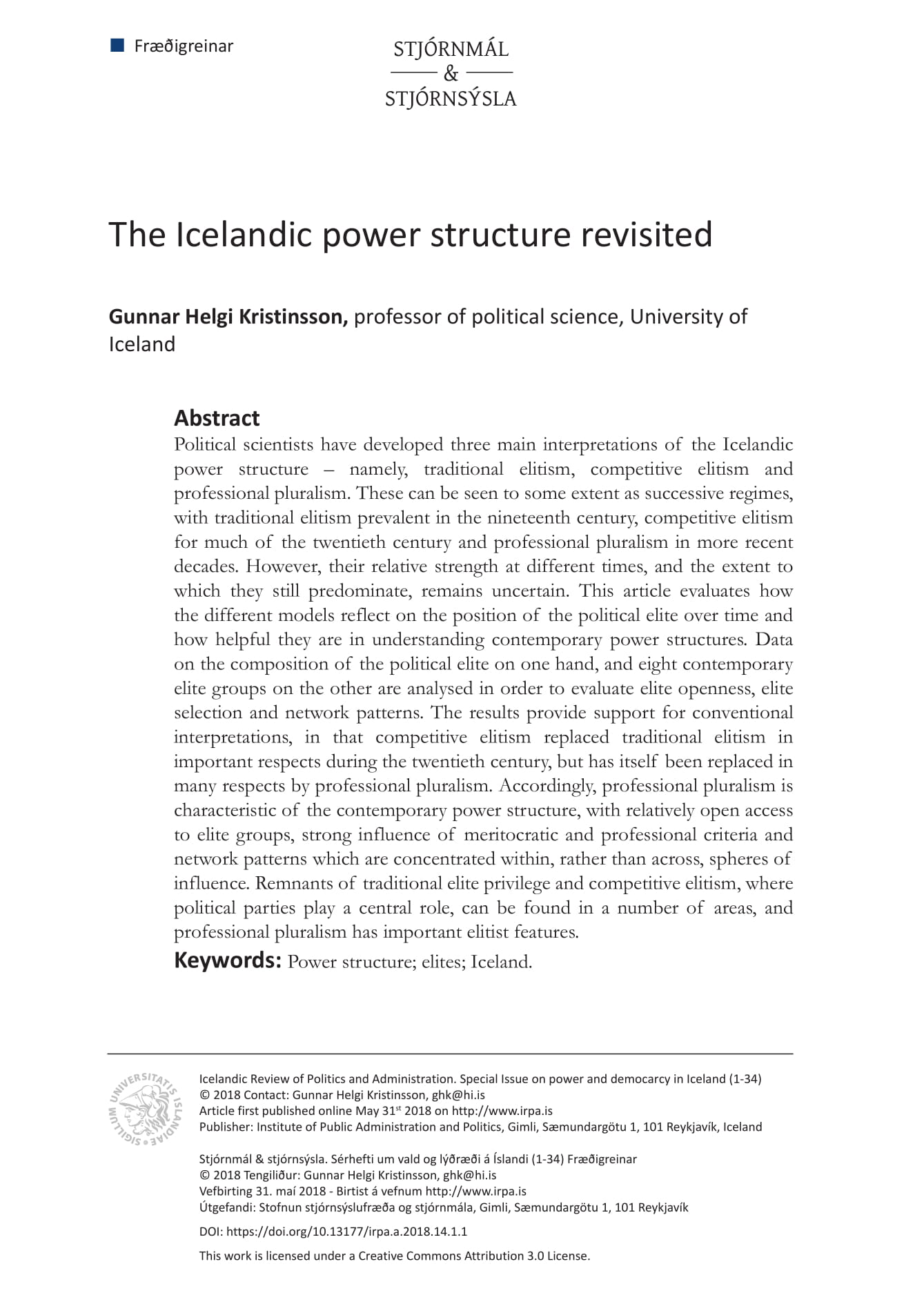Titill:
The Icelandic power structure revisited
Höfundur:
Gunnar Helgi Kristinsson
Tilvísun:
Gunnar Helgi Kristinsson. 2018. „The Icelandic power structure revisited.“ Stjórnmál og stjórnsýsla (special issue) 14 (1): 1-34. doi: 10.13177/irpa.a.2018.14.1.1
Abstract:
Political scientists have developed three main interpretations of the Icelandic power structure – namely, traditional elitism, competitive elitism and professional pluralism. These can be seen to some extent as successive regimes, with traditional elitism prevalent in the nineteenth century, competitive elitism for much of the twentieth century and professional pluralism in more recent decades. However, their relative strength at different times, and the extent to which they still predominate, remains uncertain. This article evaluates how the different models reflect on the position of the political elite over time and how helpful they are in understanding contemporary power structures. Data on the composition of the political elite on one hand, and eight contemporary elite groups on the other are analysed in order to evaluate elite openness, elite selection and network patterns. The results provide support for conventional interpretations, in that competitive elitism replaced traditional elitism in important respects during the twentieth century, but has itself been replaced in many respects by professional pluralism. Accordingly, professional pluralism is characteristic of the contemporary power structure, with relatively open access to elite groups, strong influence of meritocratic and professional criteria and network patterns which are concentrated within, rather than across, spheres of influence. Remnants of traditional elite privilege and competitive elitism, where political parties play a central role, can be found in a number of areas, and professional pluralism has important elitist features.


